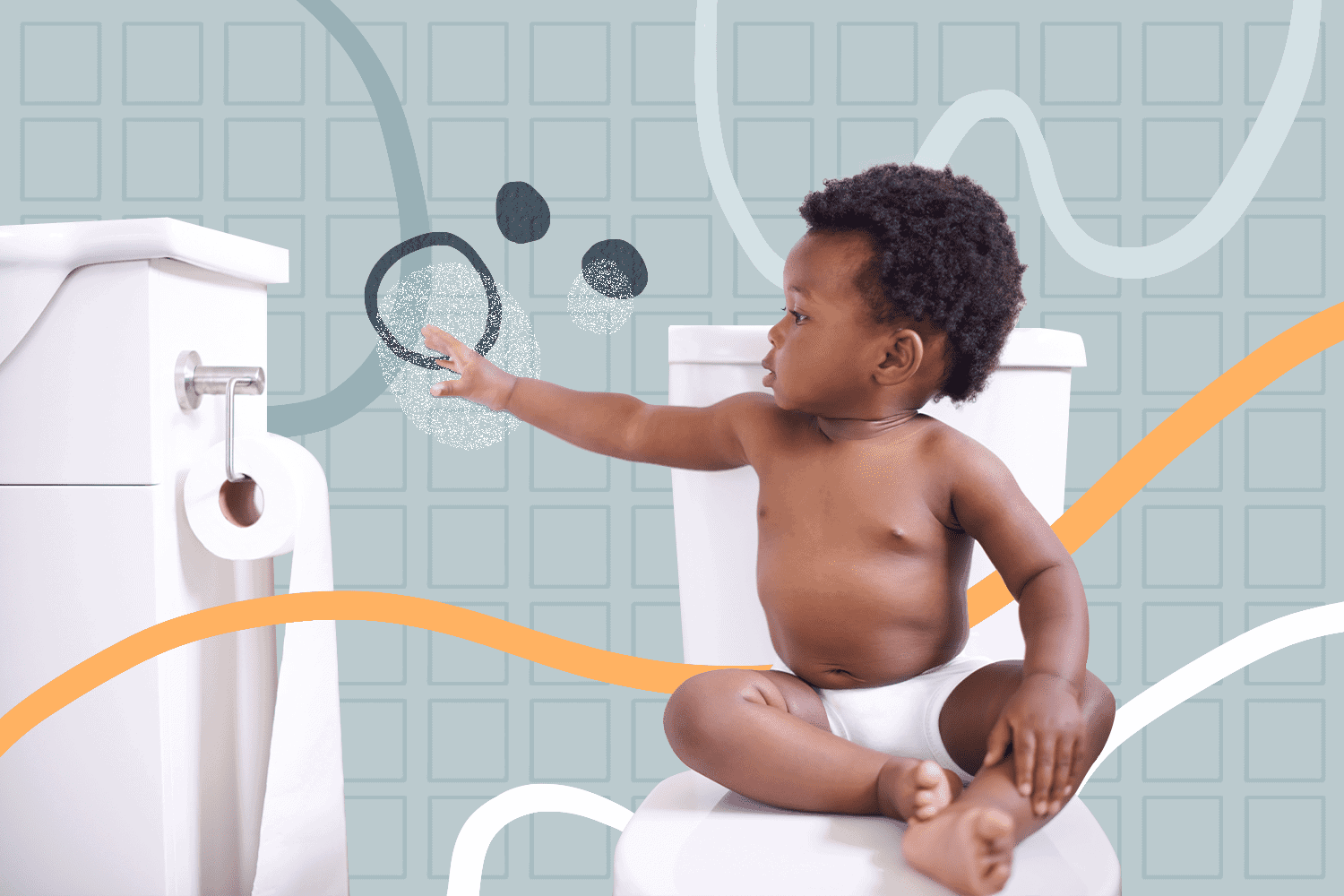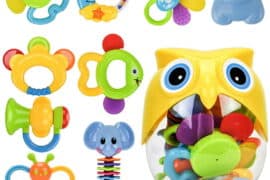Potty Training 101: Your Guide to a Diaper-Free Toddler
Welcome to the cheerful journey of potty training! As daunting as it may seem, potty training is an exciting milestone for both you and your little one. It’s the start of a new chapter filled with independence and adorable toddler-sized underwear. Let’s dive into this comprehensive guide with confidence, practical steps, and fun tips to make the transition from diapers to potty as smooth as possible for your tot!
Know When to Start
The first step in potty training is understanding when your child is ready. Most children show interest in potty training between 18 to 24 months. Look out for signs like staying dry for longer periods, hide-and-seek during poopy times, and an expressed interest in the potty. Remember, every child is unique, so your little one may be ready earlier or later—and that’s okay!
Choosing the Right Potty
There’s a wide range of potty choices out there, from simple standalone potties to fancy seats that attach to your regular toilet. Opt for a model that makes your child feel comfortable and secure. Some little ones love potties that feature their favorite cartoon characters, while others prefer a seat that sits atop the adult toilet so they can feel “big.” Let’s not forget about a sturdy step stool for those wee legs to reach the toilet and wash hands after!
Develop a Routine
Consistency is key! Establishing a regular routine helps your toddler understand when it’s time to use the potty. You might want to start by setting regular intervals to sit on the potty—like first thing in the morning, after meals, and before bedtime. Be patient and consistent, and remember: accidents will happen, and it’s all part of the process.
Dress for Success
Think ease of undressing—elastic waistbands and no-complicated-buttons type of outfits. Choose clothes that your little one can easily pull down and up. Potty training is way less frustrating when toddlers can assert their independence by managing their own clothes.
Potty Training Techniques
Every family might have their preferred method, but it’s all about what works best for your child. Some popular techniques include:
- The Three-Day Method: Intensive and immersive, this method is all about going diaper-free and committing to staying close to home for a few days. It can be effective but requires a lot of patience and vigilance.
- Reward System: Whether it’s a sticker chart or a small treat, rewards can motivate and encourage positive behavior around using the potty.
- Modeling: Sometimes, kids learn best by watching and imitating. Having an older sibling or parent to model how to use the potty can be very influential.
- Scheduled Sittings: This is more about creating a routine and less about waiting for the child to tell you when they need to go. It involves setting a timer and taking your child to the potty at regular intervals.
It’s about finding a balance that suits the rhythms of your family life while keeping your child’s temperament and readiness in mind.
As you embark on this potty training voyage, arm yourself with plenty of positivity, an ocean of patience, and an infectious enthusiasm that will make your toddler feel supported and celebrated at every step. The road to potty proficiency may have a few bumps, but with the right approach and attitude, you’ll both get there, one happy dance at a time!
Potty training your little one doesn’t have to be a daunting task. With the right preparation and a dash of patience, you can navigate this rite of passage in a way that maximizes success and minimizes stress. Next up, we’ll cover some troubleshooting tips for common potty training challenges, fun ways to inspire your child, and important hygiene habits to instill during this crucial learning phase.

5 Things Parents Should Know Before Starting Potty Training
Embarking on the potty training journey? Here are five golden nuggets of wisdom to prep you for the days ahead:
- Preparation is Key: Before you even mention the word “potty” to your toddler, be prepared with all the right gear. That means having a potty chair or seat, training pants, a step stool, and lots of spare clothes handy. Create a welcoming atmosphere around the potty area to encourage a positive association.
- Expect Resistance and Setbacks: Resistance is a normal part of the learning curve. Your child may initially refuse to use the potty or may suddenly have accidents after doing well for a while. Stay calm and reassuring; success is built on encouragement, not pressure.
- Communication is Crucial: Talk to your child about potty training in a relaxed and positive way. Let them know what to expect and how they can communicate their need to go. Books and videos about potty training can also demystify the process for little ones.
- Hygiene Practices: It’s the perfect opportunity to teach your child the importance of washing their hands after using the bathroom. Make it fun with songs that last 20 seconds to ensure they wash long enough to get those hands sparkling clean!
- Know Your Child’s Cues: Be observant of the signs that your child is ready for a trip to the potty. This could be a certain dance, facial expressions, or words. When you see the cues, act quickly but calmly to avoid any stress or panic.
Overcoming Challenges: Fret Not!
No adventure is without a few dragons to slay, and potty training might serve up a few fiery ones. Here’s how to douse the flames like a true Potty Training Knight:
- Accidents Happen: Keep the mood light and reassuring. Clean up without fuss, and remind your tot that it’s all part of learning. A ‘No Biggie’ attitude helps prevent feelings of shame or disappointment.
- Scared of the Potty?: Some kiddos are intimidated by the toilet. If this is the case, let your child decorate the potty with stickers, or find a potty book they can read while sitting there to make the experience less scary and more appealing.
- Regression: If your child starts having more accidents after doing well for a while, take a step back and assess. They might be seeking attention, responding to stress, or simply being too absorbed in playtime. Address the underlying cause with love and attention, and the issue often resolves itself.
Lighting the Way with Fun!
Who says potty training can’t be a party? Brighten the atmosphere with these cheerful strategies:
- The Potty Dance: Invent a happy-dance for successful potty visits. Your genuine excitement is contagious and can turn potty time into fun time.
- Colorful Targets: For little boys learning to aim, floating biodegradable soap pieces in the toilet can make for a fun target practice!
- Storytime by the Potty: Keep a stack of favorite books near the potty to make sitting there more appealing.
- Role Play with Toys: Have a favorite doll or action figure? They can “use” the potty too! This can help normalize the process for your child.
And remember, keep the cheer going! Celebrate every victory—no matter how small—and your toddler will be more likely to stay motivated. Now, armed with plans, patience, and a pile of positivity, you’re set for potty training success!
With this useful guide, we hope you feel ready and excited to guide your toddler through the potty training journey. Remember to stay patient, keep a sense of humor, and look forward to the day when your little one can proudly say, “I did it!” Happy potty training!
See more great Things to Do with Kids in New Zealand here. For more information see here
Disclaimer
The articles available via our website provide general information only and we strongly urge readers to exercise caution and conduct their own thorough research and fact-checking. The information presented should not be taken as absolute truth, and, to the maximum extent permitted by law, we will not be held liable for any inaccuracies or errors in the content. It is essential for individuals to independently verify and validate the information before making any decisions or taking any actions based on the articles.




